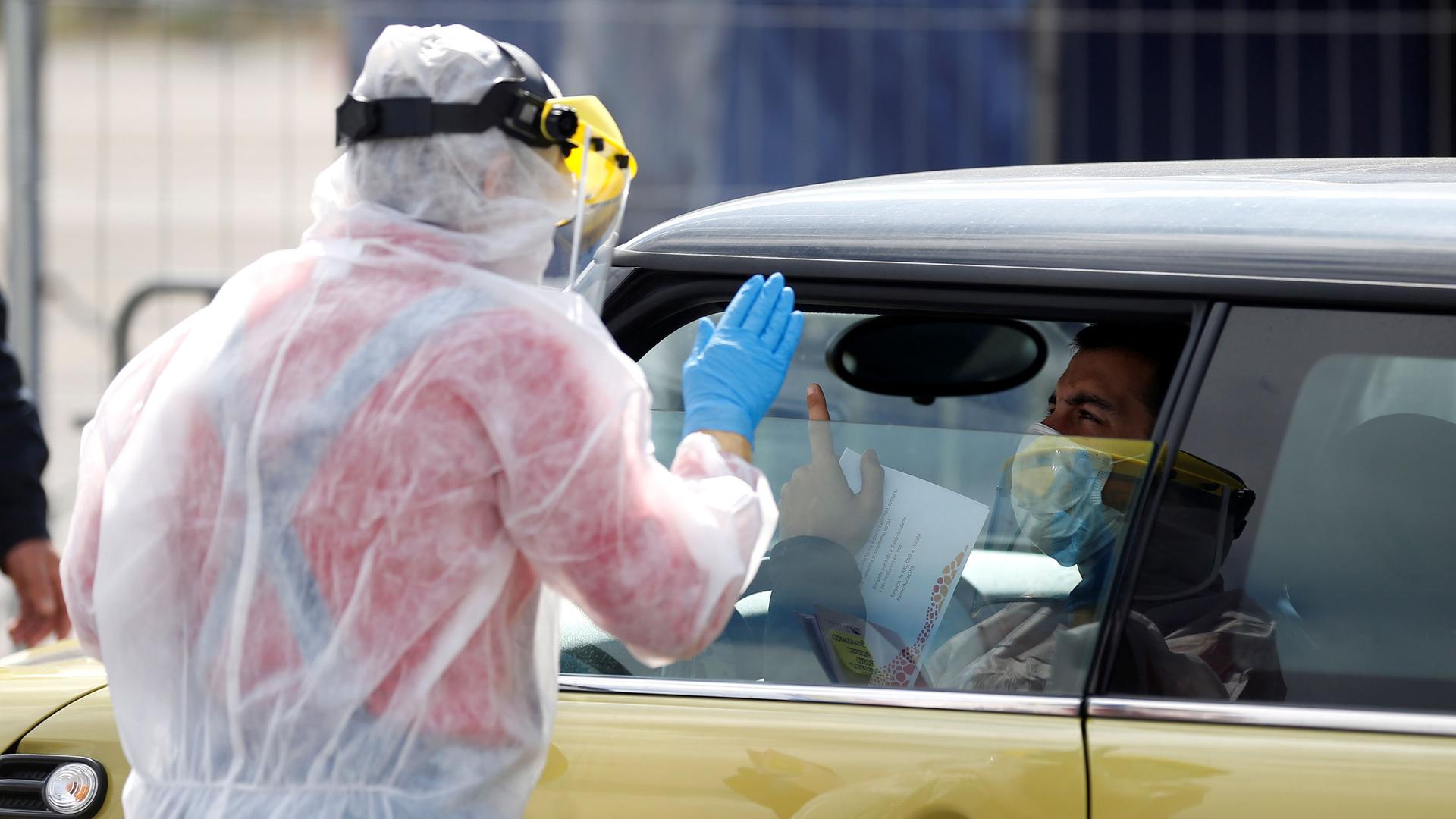A health worker at a drive-through coronavirus disease testing center in Lisbon, Portugal, March 26, 2020.
Coronavirus cases across the globe jumped on Thursday as Japan announced plans for a special task force and New Zealand went under lockdown.
Health care systems around the globe are under tremendous pressure to handle the rapidly growing number of cases. The race to develop a vaccine against the new coronavirus, which first appeared in China late last year, has accelerated as its spread became a global pandemic. There is no proven cure or prevention for the disease COVID-19.
As of Thursday, 200 countries and territories have reported infections, with a global total of more than 480,000 confirmed cases and more than 22,000 deaths.
In the US and elsewhere, health care professionals are working overtime to screen thousands for COVID-19. But, critics argue there has been a significant lag in testing.
As part of The World’s new weekly series of live discussions in partnership with Harvard’s Chan School of Public Health, reporter Elana Gordon moderated a conversation with Dr. Ashish Jha, director of the Harvard Global Health Institute, who addressed why the US is behind other countries and how innovations may help address the gap.
Our coverage reaches millions each week, but only a small fraction of listeners contribute to sustain our program. We still need 224 more people to donate $100 or $10/monthly to unlock our $67,000 match. Will you help us get there today?
